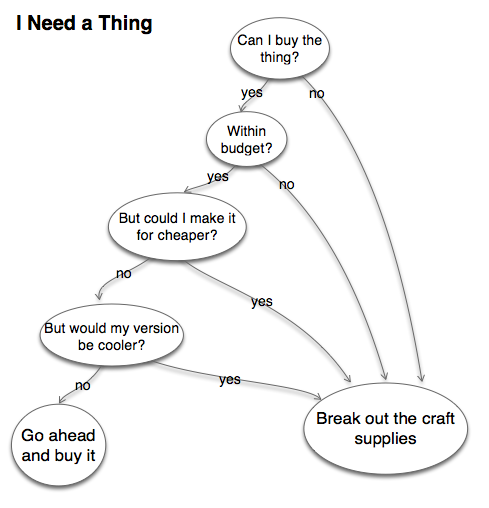
It probably says something about the kind of household I live in that the notion of making my own shoes didn’t seem that strange or extreme to me. I mean, hell, we have a whole book on the subject, and the internet is full of tutorials and ideas and even patterns. But out there in meatspace the notion seems to boggle people, even other sewists. But to me, that’s just what you do: you can’t find it—or afford it—you make it.
The thing that tipped me over the edge into I should make my own shoes wasn’t even the thought that I could have fun designing and decorating them, that was just a cool bonus. It was have you seem the price of barefoot shoes out there geez. (Is it a comment on the state of our society that you have to pay so much more for something labeled “minimal”?) Don’t get me wrong, I’m on my second (second and a half?) pair of Merrells and I love them, but I always, always get them on sale.
Plus, as wonderful as Merrells are, and as superior as they are to standard sneakers, they’re still shoes. Meaning they still have a fair amount of cushioning and support. I wanted something a little closer to true barefoot.
For the first pair (which I don’t have photos of) I did the duct tape pattern thing for my foot. Which can work fine, but you need to remember to pad out the toes to give yourself a little more room. But that wasn’t the main problem with these shoes.
Biggest problem: I had glued the sole on.
The Make Your Own Shoes book recommends using shoemaker’s cement, but I was having trouble finding it. I asked the folks down at Tandy Leather, and they actually suggested using rubber cement—that way if/when the sole wears out, you can easily remove it and stick on a new one.
The proooooblem with that, the big, huge, problem, is that it detaches a little too easily. Get your foot caught on the rug or sidewalk? Step a little bit wrong? Catch it on the side of a chair? Bye-bye sole. After the first time or two I switched to using Shoe Goo but even that was only marginally better.
Onto the next pair of shoes.
I had a pair of Chinese mary-janes that I had worn to death, so I cut them apart and traced a pattern from them. Much easier than the duct tape method. But the most significant change was that I hand-sewed the leather outer sole to the fabric inner sole using saddle stitch before I sewed the bottom to the upper. This isn’t a method you could use if you were making formal or dress shoes (like in the book), but these are slipper-like turned shoes.
… Except the leather really didn’t want to turn. At all. I don’t even remember how I finally got them right side out, but more than once I was sure I was going to pop a seam or tear the fabric.
 In light of this, for the next pair I soaked them before trying to turn them. When a lot more smoothly—except that I forgot that things tend to shrink as they dry. If you try this, it’s a good idea to already have a pair of lasts that you can stick the wet shoes on so that they don’t end up a quarter size or so smaller when they dry. In this case I had to re-wet them and stick them (wet) onto my feet. Luckily it was a warm day.
In light of this, for the next pair I soaked them before trying to turn them. When a lot more smoothly—except that I forgot that things tend to shrink as they dry. If you try this, it’s a good idea to already have a pair of lasts that you can stick the wet shoes on so that they don’t end up a quarter size or so smaller when they dry. In this case I had to re-wet them and stick them (wet) onto my feet. Luckily it was a warm day.

Oh, and what I had said before about saddle stitch: I wore through the stitching on both heels and, amazingly, the only part that separated was the part that had worn through. Which is a damn good thing, because it’s hard enough to resew the back part of the shoe. But because the rest of the seam was still pretty secure, I was able to fix these without much problem. (Lessons learned: cut a deeper groove, protect the stitching with some Shoe Goo, and learn to stop heel striking.)
I still wear my Merrells when I’m going to do any serious walking or when it’s cold. And I have shoes (also Merrells, but not from their barefoot line) that I wear for work. But these are edging into being my favorite shoes to wear. They’re fun, they’re comfortable, and yes, I get to show off!







Recent Comments